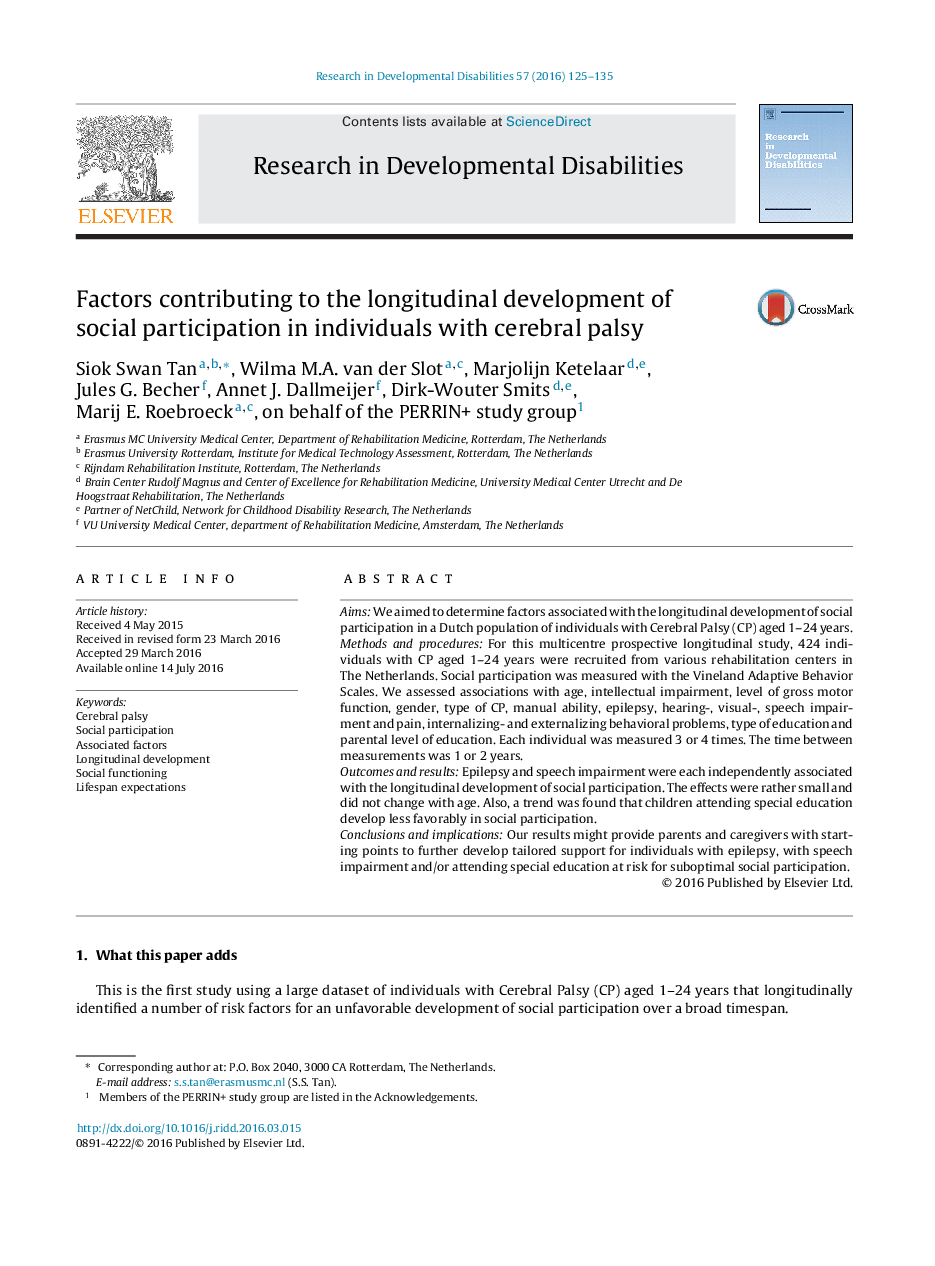| Article ID | Journal | Published Year | Pages | File Type |
|---|---|---|---|---|
| 371010 | Research in Developmental Disabilities | 2016 | 11 Pages |
•We determined factors associated with the longitudinal development of social participation in individuals with CP aged 1–24 years.•Epilepsy and speech impairment were each independently associated with the longitudinal development of social participation.•A trend was found that children attending special education develop less favorably in social participation.
AimsWe aimed to determine factors associated with the longitudinal development of social participation in a Dutch population of individuals with Cerebral Palsy (CP) aged 1–24 years.Methods and proceduresFor this multicentre prospective longitudinal study, 424 individuals with CP aged 1–24 years were recruited from various rehabilitation centers in The Netherlands. Social participation was measured with the Vineland Adaptive Behavior Scales. We assessed associations with age, intellectual impairment, level of gross motor function, gender, type of CP, manual ability, epilepsy, hearing-, visual-, speech impairment and pain, internalizing- and externalizing behavioral problems, type of education and parental level of education. Each individual was measured 3 or 4 times. The time between measurements was 1 or 2 years.Outcomes and resultsEpilepsy and speech impairment were each independently associated with the longitudinal development of social participation. The effects were rather small and did not change with age. Also, a trend was found that children attending special education develop less favorably in social participation.Conclusions and implicationsOur results might provide parents and caregivers with starting points to further develop tailored support for individuals with epilepsy, with speech impairment and/or attending special education at risk for suboptimal social participation.
